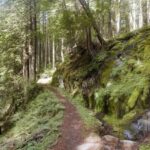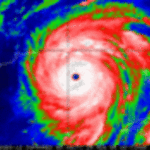Hundreds of people die each year around the world from avalanche related deaths. People want to get out there and have a great time hiking up the mountain, and to being able to enjoy the beautiful scenery. It is crucial to know the risks involved. One should have the proper training before venturing out in avalanche terrain. According to the American Institute for Avalanche Research, and Education, case studies show that red flag warning signs were ignored by people caught, and killed in avalanches. Furthermore, 90% of recreational avalanche accidents are caused by the climbers. So it is important to know the signs involved when it comes to danger and act on those signs for your safety and for the rest of the group.
According to the Wilderness and Environmental Magazine; a report was written by Scott McIntosh, M.D. and his co-authors from the University of Utah in Salt Lake City. They reviewed records from The Utah Avalanche Center
and read the medical examiner reports which concluded that the majority of avalanche related deaths were from asphyxiation. Which is estimated as being 85.7 percent of the deaths from avalanche accidents.
There are additional reports that state 2/3 of avalanche victims die from injuries while falling down at rapid speeds due to trauma from speeds of 80 mph., or more. You never want to be yelling up there or doing other things that can trigger an avalanche. First and foremost be educated in mountain climbing.
By being prepared for the trip ahead of time helps lower the risk factor. Plan well ahead of time and make sure you have all the proper gear for the trip. Also make sure that people know where you are heading and that you go with another person or in a group.
Everything you will need to know and learn about you will find by:
* Taking an avalanche course or refreshing your memory by taking one if you haven’t taken a course in years.
* Read guidebooks, magazines, or books on mountain climbing, and survival / safety skills for the trip. There are books you can checkout at the library on avalanche accident by case studies, or documents of what went wrong, and any other knowledge you need; right down to proper attire.
Pay attention to your surroundings and know what to look for and hear; when it comes to dangerous situations on or around the mountain. Know the “Red Flags” / Warning Signs when it comes to weather changes, etc., and act on those conditions or situations’.
If an avalanche starts to happen quickly seek shelter behind rocks, tree(s), or vehicle. Turn away from the avalanche crouch down and cover your nose, and mouth. All this information will be apart of the avalanche safety course. Since avalanche deaths are caused mostly by not being able to breath then it is crucial that you create an air space if you happen to fall victim. In addition, you will want to yell out, or make noises when you hear rescue workers
nearby. If you end up being buried alive and are unable to get out then try doing swimming motions to loosen up the snow to escape.
Note: Statistics state that victims that are buried alive must be found within 15 minutes for any reasonable chance of survival. If the rest of your party is there and some have not been buried then they must dig you out or the person that has been buried alive. The person(s) only have a short amount of time, so act fast!
Here are some important items that help, and are needed for avalanche terrain safety. Pick, and choose what works best for you.
Avalanche Safety Gear
Slope Meter is used to determine the angle of a slope if it is dangerous or not. According to the Department of Environmental Conservation “90 percent of all avalanches start on slopes of 30-45 degrees and about 98 percent of all avalanches occur on slopes of 25-50 degrees”.
Rescue Beacon:
You will be able to locate people that have been buried alive in an avalanche. It is a must have for saving lives in avalanche country. They range around $300.00 or you can purchase one in a backpack that includes all your avalanche safety gear for around $500.00
Ava-Lungs
is a great tool to increase your chance for survival by enabling you to breath once buried; by drawing air directly from the snow pack. You will need to wear it on your outer clothing. The Ava-Lung membrane increases the surface area from which you breathe, making it possible to pull this air from the snow for survival.
Avalanche Cord
this is a cheaper version and an old way of saving lives but can still work. By means of following the rope to where the person or people have been buried alive. The cord is about 30 feet long and attaches to you and then you drag the cord behind you. If you get buried alive then the cord is used to located the victim.
Avalanche Air-Bag System
Backpack systems that inflate in an effort to keep you afloat once caught. These relatively new devices have been shown to help avalanche victims stay above the surface. Your wear the system in backpack and pull a release when the avalanche starts. They’re expensive (about $500-1000), but they can save your life.
Bivy Sack
overnight sleeping bag for emergencies fit on your backpack. You will want a way to start a fire also.
Probes
can break through layers of snow and show you the depth and position the victim is buried in the snow.
Avalanche Shovel is something happens everyone in your party should be carrying a fold up shovel in order to dig out people that have been buried.
Backpack:
A must have would be a proper backpack with good support. Packs like the “Mammut Nirvana 35 Avalanche Package” ranges around $500 and include avalanche safety gear.
Clothing:
warm, waterproof jacket, pants, warm gloves, socks, hat, and bring extras of each. Also, Thermal underwear. You might want to have on a second layer for warmth on colder days.
Survival Blanket it is one of the lightest things you will carry that is crucial to survival in the mountains. Carry one in your backpack. Costs around $4.00
First Aid Kit for all your outdoor adventures is a must have.
Batteries:
have extra batteries for your battery operated equipment such as for your beacon, flashlight, etc.
Resources
Shopping Online for your back country needs. http:www.backcountry.com
Reference:
- Avalanche Courses http:/www.avtraining.org
- Avalanche Centers avalanche.org
- NorthWest and Avalanche Center www.nwac.us/accidents.htm





